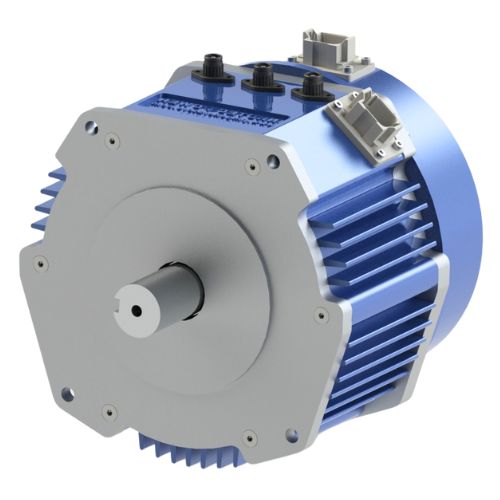What is a Brake Motor?
A brake motor is a unique type of electric motor with a built-in brake system. This brake allows the motor to stop in a hurry and remain stationary. Brake motors come in handy on machines that have to stop at a moment’s notice or a load safely without power. In short, a brake motor is the same as a normal motor, except that it also knows when to stop—and stops quickly and safely.
How Does a Brake Motor Work?
The motor brake is typically electromagnetic. This is where electric power makes the brake work. Here’s how it works in simple steps:
When the power is ON: The brake is released. The free motor spins, and the shaft rotates normally.
When the power is OFF: The brake is activated. It applies pressure to a disc or a plate and brings the shaft to a halt.
This is very useful for machines that need to stop precisely where they are when power is switched off.
Why Brake Motors Are Necessary
Brake motors are necessary for machines that need to:- Stop suddenly
- Maintain a fixed position
- Operate safely
- Prevent movement after stopping

Where Are Brake Motors Used?
Brake motors find application in numerous industries and machines. Let’s see some typical applications:- Lifts and Elevators: In lifts, a brake motor halts the cabin and keeps it stationary when individuals enter or exit. It provides safety by avoiding any unnecessary movement.
- Cranes and Hoists: These devices lift heavy loads. A brake motor assists in halting the load precisely where required and keeping it, even in case of power failure.
- Conveyor Systems: Conveyor belts transport materials in factories and warehouses. Brake motors ensure that they are stopped at the appropriate moment and maintained stationary when loading or unloading.
- Packaging Machines: When it comes to packaging lines, timing is critical. The brake motor ensures that the machine is brought to a halt at the correct place so that the package is sealed, cut, or filled appropriately.
- Printing Machines: Printers have to halt the paper at the appropriate time to print correctly. Brake motors prevent misprints or paper jams.
- Machine Tools: In cutting or drilling machines, brake motors rapidly halt tools to prevent over-cutting and enhance safety.
- Textile Industry: In fabric processing machines, brake motors stop rollers and guide systems at the appropriate time to ensure fabric quality.
Types of Brake Motors
There are various brake motors, depending on the use: AC Brake Motors: Operate with alternating current power supply. DC Brake Motors: Operate with direct current supply. Fail-safe Brake Motors: Brake is engaged automatically during power failure. Suitable for safety purposes. Flameproof Brake Motors: Employed in explosive or hazardous environments due to gas or dust. You can select the appropriate type based on your machine and environment of work.
Advantages of Using Brake Motors
Let’s consider the major advantages of brake motors:- Safety: The primary advantage. Brake motors minimize the chances of accidents by stopping machines at once and locking them in position.
- Quick Stopping: They stop machines quicker than regular motors. It’s convenient in emergency or rapid-moving operations.
- Accurate Control: They assist you to stop at the intended location—perfect for packaging, cutting, or printing.
- Space Saving: Because the brake is within the motor, you don’t have to add an independent braking system. This conserves space and wiring.
- Energy Saving: The brake remains in the position even when the motor is stationary and does not consume additional energy or components.
- Less Wear and Tear: The braking system minimizes motion after stopping. This ensures belts, pulleys, and other components are not damaged.
How to Choose the Right Brake Motor
Here are some easy tips to select the appropriate brake motor:
Know your machine’s braking requirements – Does it require quick braking or position holding only?
- Check the load – Does it carry heavier loads? These will require more powerful brakes.
- Observe the work environment – Dusty, wet, or explosive working environments require special motors.
- Check the power supply – Ensure the motor is compatible with your voltage and phase.
- Select the right speed and torque – This makes your machine run smoothly.
If unsure, consult a motor expert or manufacturer for guidance.
Tips for Maintaining Brake Motors
To maintain your brake motor properly, use the following tips:
- Inspect the brake regularly – Check for wear or noise.
- Clean the motor – Dust can destroy the brake over time.
- Check connections – Loose wires can impair braking.
- Lubricate moving components – But not the brake disc, leave that dry.
Proper maintenance keeps your motor longer and performing better.
Frequently Asked Questions About Brake Motors
A brake motor is primarily employed to stop and hold machines securely and promptly.
Yes, but it’s ideal for machines where stopping or holding is extremely critical.
No. A brake motor contains an additional brake system integrated. A regular motor simply operates but does not stop or hold by itself.
The brake motor will stop the shaft automatically and hold the position securely.
Conclusion
Brake motors are a safe and intelligent solution for most machines. Brake motors stop the motor instantly and lock it down without additional equipment. From lifts, cranes, and conveyors to packaging machines, brake motors make them safer, quicker, and more efficient.
Do you want to improve your machine with enhanced safety and control? A brake motor is the ideal solution.
Require assistance in selecting the proper brake motor?
Discover our variety at:
www.innotecpower.com/motors/brake-motors
